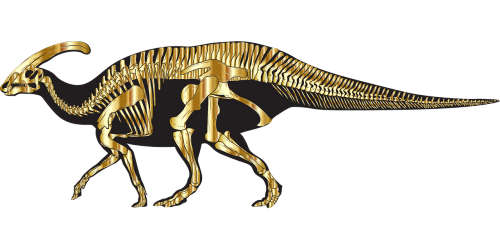66 million years ago, a large asteroid hit the Earth, and famously wiped out the non-flying dinosaurs and many other animal groups. The angle at which it hit the Earth, plus the location, a shallow seabed next to the Yucatan peninsula full of sulfur-containing gypsum, made it even more deadly. The impact spewed vast quantities of vaporized seabed into the upper atmosphere. If the asteroid had been larger, it could have ended most multicellular life. The location where it struck was a random fluke. If it had struck the middle of the Pacific ocean, there would have been no lasting significance.
Most plant and animal species did not die immediately. The sulfur compounds and other fine particles thrown into the upper atmosphere reduced sunlight to only 10% of normal within 24 hours and lasted years after the impact. Worldwide temperatures plunged to below freezing for years. The upper atmosphere would only lose about 10% of those fine particles each year, causing sunlight and warmth to increase at a crawl.
Most living plants did not receive enough sunlight or warmth and died in the first year. Fifty percent of all plant species went extinct. The ones that survived came back from their seed and roots. Of those that survived, many of the flowering plant species already had an unusual genetic adaptation. They were polyploidy, that is, having two or more whole copies of their genome. This made them more adaptable, and able survive a greater range of environmental conditions. Some lichen and fungi species also thrived, living off massive amounts of dead plant material.
As living plants expired in the cold and gloom, the plant-eating dinosaurs died of starvation. The meat-eating dinosaurs had a temporary feast, then also died as food ran out.
While birds survived the immediate impact, most bird lineages went extinct. Scientific evidence indicates that body size, behavior, and beaks mattered. Only the smallest-bodied, ground-nesting bird species having beaks that could process seeds were able to locate enough food to avoid starvation in the first few years.

Flying requires far more energy than walking or running, so ground nesting birds would have an advantage with lower energy and food needs. Not having to roost in trees without leaves, they avoided severely cold winds that would doom other birds. Nesting and roosting on the ground they could search for food on the ground, under leaves, and find cozy, safe spots at night for warmth, all without flying. DNA studies show that modern bird species evolved from the few species that survived. Since birds are one branch of the dinosaur family tree, and today have twice the number of species as mammals, dinosaurs still maintain a significant place on planet earth.
Of mammalian species, marsupials and placentals became as large as badger and domestic cat size during the large dinosaur era. After the impact, large mammals died of starvation. Tiny placental mammals, having little competition once sunlight returned, expanded in size, eventually taking over most of the world.
Ten years after impact, enough fine particles and sulfur compounds had drifted out of the upper atmosphere that sunlight and temperatures were nearly back to normal. This changed world was now inhabited by very small warm-blooded animals and larger cold-blooded ones. The impact ended the Cretaceous period and started the Paleogene. Estimated loss of life: 75% of all species.
© 2023-2025 by Topicnews.org

